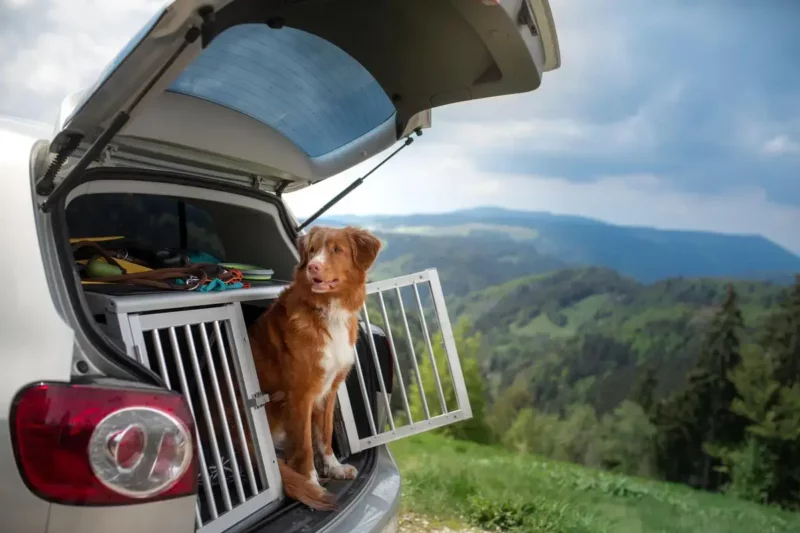It’s that time of year when you book your trip to visit your relatives and make plans for the holiday season. What to do with your pets? There are various options; like kennelling, pet sitters and pet hotels, but what some pets really enjoy is joining you for the trip. We know that some of you would never go away without your pets! So how do you prepare for the journey travelling with pets?
Travelling by car is relatively easy with a well accustomed pet. But if you have a new addition or have not had the need to transport them in the car, (except for that annual vaccination at the vets), my first tip is to do some ground work.

Dummy runs
We need our pets to have a good association with the car. Start with a short trip ideally somewhere fun! If you find your pet consistently vomits in the car, speak to your vet, they can dispense medication to help with nausea.
Documentation up to date
When last were your pets vaccinated? You are expected to travel with your pets vaccination records up to date. Don’t forget to ask your vet to microchip your pet and ensure the microchip details are correct in the event that your pet somehow escapes. Do research on your accommodation to make sure that it is pet friendly.
The car journey
Plan your trip factoring in possible delays. It is important for you and your pet to have regular stops, we recommend every 2 hours. It is advisable to spend about 15 to 20 minutes at each stop. It can be dangerous to allow cats out of the car, even on a harness. Rather provide your cat with a litter box and food or water in the car.
When travelling be conscious of two types of “car accidents” that could happen.
The less serious is that when your pet makes a mess in the car. Take them for a walk before traveling and encourage them to got to the toilet to prevent this occurring. Not feeding them for at least 2 hours before travelling will help with this and nausea.
The more serious is a car accident that could happen. Ways to mitigate the damage done includes transporting your pets in a carrier, restrained by a lead or behind a grate. This way they won’t distract you by climbing onto you or obstructing your view and will be more secure in the event of an impact incident.
Packing the kit
Planning a pet travel kit will help set you up for a great journey. Take sufficient food and water for the entire trip (don’t forget their treats). Include their collar and lead to make it easier to handle them when stopping for a toilet break or arriving at your destination. Never leave your animal alone in a car. On a hot day, even with the windows open, a parked car can cause a rapid temperature rise and result in a life-threatening condition known as heat stroke.
Consider packing their favourite toys and a nice comfy blanket they associate as their own. It is useful to include in the documentation records, a photograph of your pet. Plus, it sets you up to remember to pack your camera to capture all the memories made together on your holidays!
When you arrive
Have the contact information for nearby vet clinics saved to your phone and know where the closest emergency vet clinics are for any after-hour emergency situations. When you reach your destination, keep your cat indoors and make sure that they cannot get out of the accommodation accidentally. Keep your dog on lead until you are safely inside, in case they run off to meet new friends. It’s important that you stick to your regular routine whilst away, like feeding times, exercise and medication, so you can have an uneventful and enjoyable break.